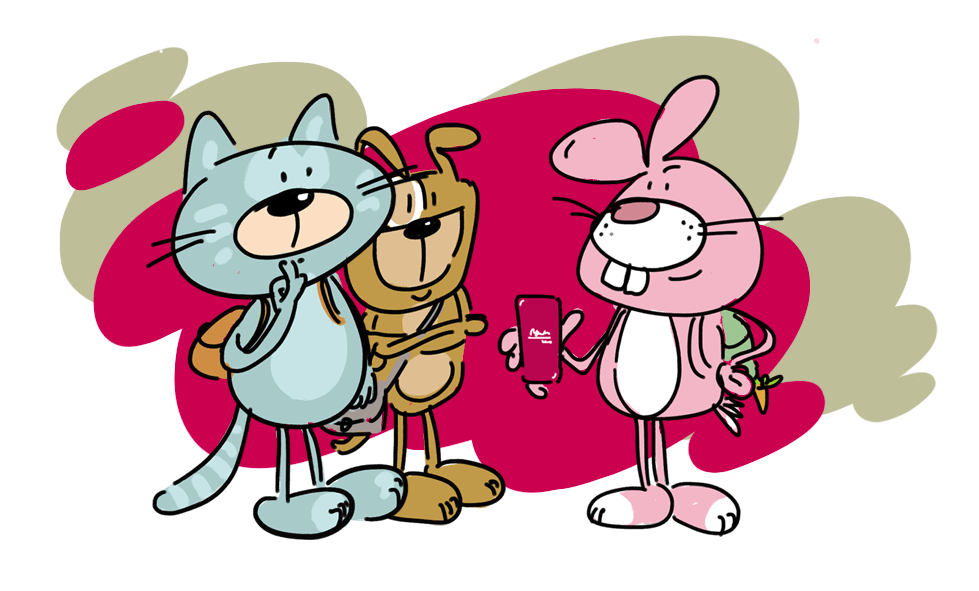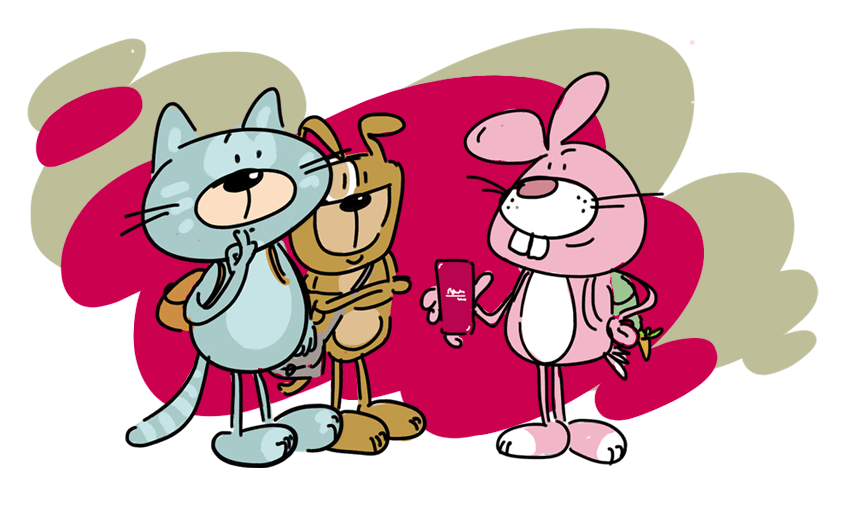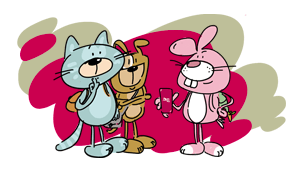The bank’s secrets,
or from bench to mobile phone
Goal: to provide basic information about the bank’s history as well as its tasks with respect to customers; explain rules of behaviour when visiting such institutions; show a bank today as a modern and customer-friendly institution.




The name “bank” comes from the French word banque and from the Italian word banco, which mean a bench or table, at which traders worked (especially goldsmiths) dealing with transferring commodity coins from customers to other customers. Today a bank is an institution, the tasks of which are not limited to such transactions only. In the eyes of a child, it may appear huge, mysterious, indeed inscrutable.
It is a good idea to start the bank adventure with a short video “Mr. Sebastian and the tale of the bank”link otwiera się w nowym oknie. Among questions that may arise later, guide the child towards subjects to do with the bank. Because kids learn from specific things, this time the parent’s job will be to arrange a trip to the bank. First the traditional one, known as a branch, and then - a modern bank i.e. in a mobile app or the Internet.
Let us start with tradition. Preparing for the first trip involves:
- for the child: comfortable clothes, a backpack with a sheet of paper and pencil, eraser, ruler and crayons;
- for the parent: comfortable clothes, a few banknotes, a payment card.
First you need to find the bank where the parent has an account; the bank needs to be open. The kid’s first assignment is to draw a simple rectangle on the sheet of paper. This is our bank. Then measure the building (best done with steps) and write the result on the rectangle. The child may also mark the doors and windows and even draw the surroundings of the bank (pavements, trees or shops). The kid should understand that a bank is not just a bench any more, as it used to be, but a large building surrounded by many others, part of a town or village.
Once we have understood all that, the yime has come to see the bank inside. Before entering we ask the child to remember as many details as possible. This is a very good memory exercise, which makes use of kindergarten kids’ natural curiosity. During the visit the parent, with the child’s help, should deposit the money brought on the bank account. The child must see the process of such a transaction - teller’s desk, counting the money, deposit receipt. Before you leave the bank it is a good idea to sit down with the child and observe the people inside. Do they shout or talk softly? Do they run around or stay in the queue? The purpose of this activity is to show the child that there are certain rules of behaviour in a bank branch and they need to be observed. After leaving the bank we will ask the child to draw some things it has remembered. The drawing should also show 2 - 3 rules of how to behave in a bank.
The last part of our trip is to look for an ATM. If it is in the same building, you can draw it with the kid on a map; if not, then next to the rectangle drawn on the sheet of paper draw the way to get to the ATM. On the way ask the kid if it knows what an ATM is. When you get there, explain to the child that the money deposited earlier at the teller’s desk can now be withdrawn from the ATM. After all these explanations you can proceed with the child to the ATM, asking it e.g. to press the “Enter” button or remove the cash prepared by the machine.
In later days you can e.g. prepare together with the kid a template of his/her ATM card or remind of the good behaviour principles, using educational puzzles. There are also ATMs - piggy banks available on the market (with a card and PIN and also displaying the amount of savings).
After this adventure the time will come for another one. This time we will home-in on a modern bank, i.e. not just a building, but an intriguing efficiently working technological machine. It allows almost banking business to be handled online or by phone, without leaving home or a cafe. Modern banking also involves convenient payments with cards (also virtual ones), a watch, by BLIK, Apple Pay as well as other mobile methods. You can even open a bank account by taking a selfie. Just fill-out an online application and attach a selfie of your face and a photo of your Personal Identity Card. Conclusion? We can arrange a modern bank ... in a phone or laptop and perform many financial actions sitting on a couch or a park bench.
I order to show modern banking to a child prepare a challenge. It is best to prepare a week or two at most for the challenge. The parent should prepare a table like that onelink opens in a new window, a stamp (a toy stamp) and a phone or computer. It is also a good idea to come up with a prize, which will be attractive for both sides, for which the parents and the children alike will eagerly compete. The winner may be announced only once the parent as well as the child have done all tasks on the list.
Performance of the task may be confirmed with a stamp or fingerprint put in the appropriate place in the table. Once the challenge has been completed the award may be collected - this can be a cinema, zoo or swimming pool outing. Naturally the payment for the selected award should be made with use of electronic or mobile banking.
Finally we recommend some books about good behaviour, not only in a bank:
- “The Giggly Guide of How to Behave (Mind Your Manners)” by P. Jalbert,
- “Dobre maniery, książka którą mieć wypada” by B. Żołądek,
- “Dobre maniery Cecylki Knedelek, czyli o tym, że wypada wiedzieć, co wypada” by J. Krzyżanek,
- “Miś Marcyś uczy dzieci dobrego zachowania” by A. Maćkowiaka.